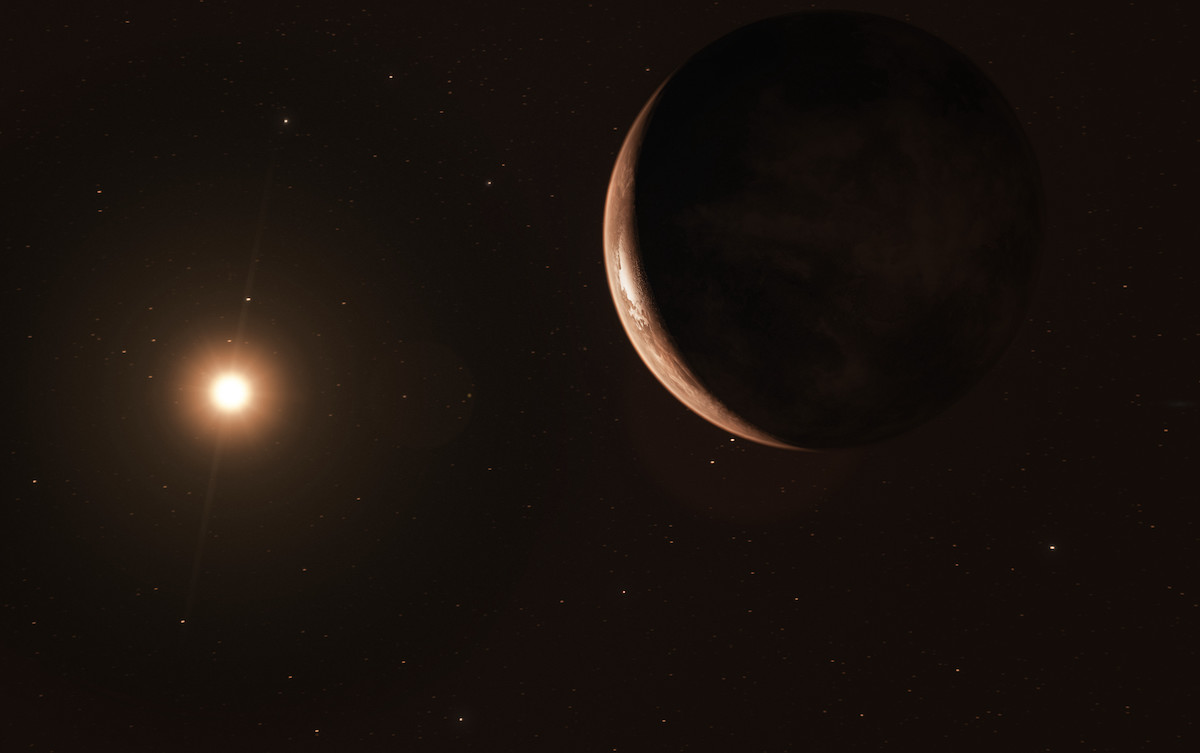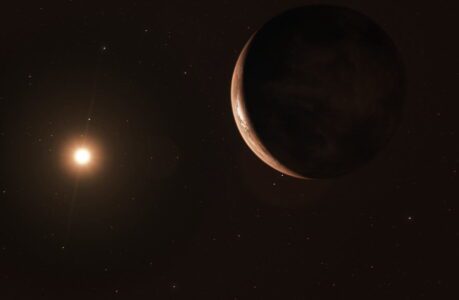Barnard’s Star is a red dwarf star located in the constellation Ophiuchus, just six light-years away from our solar system. Discovered in 1916 by American astronomer E.E. Barnard, it is the fourth closest known individual star to the Sun, after Proxima Centauri, Alpha Centauri A, and Alpha Centauri B. Barnard’s Star is named in honour of its discoverer, who was a prolific observer of the night sky and made many important contributions to the field of astronomy.
Barnard’s Star is a small and dim star, with a mass and radius about one-seventh that of the Sun. It has a surface temperature of about 3,150 kelvin, which is much cooler than the Sun’s temperature of 5,500 kelvin. Due to its low luminosity and small size, Barnard’s Star is invisible to the naked eye and can only be seen with telescopes. However, despite its unremarkable appearance, Barnard’s Star has captured the attention of astronomers for over a century due to its unique properties and potential for hosting exoplanets.
One of the most intriguing features of Barnard’s Star is its high proper motion, which means that it appears to move quickly across the sky relative to other stars. In fact, it has the largest proper motion of any known star, moving about 10.3 arcseconds per year. This motion was first noticed by Barnard himself, who observed that the star had changed position by about 10 arcminutes over a period of 22 years. The high proper motion of Barnard’s Star is thought to be due to its close proximity to the Sun and its relatively fast velocity through space.
Another interesting property of Barnard’s Star is its magnetic field. Like many other red dwarf stars, Barnard’s Star has a strong magnetic field that can generate intense flares and coronal mass ejections. These events can release large amounts of energy and radiation, which could pose a significant challenge for any planets in the star’s habitable zone. However, some studies have suggested that Barnard’s Star may have a relatively stable magnetic field compared to other red dwarfs, which could make it a more promising target for exoplanet searches.
Speaking of exoplanets, Barnard’s Star has long been a target of interest for astronomers searching for potentially habitable worlds outside our solar system. In 2018, a team of scientists announced the discovery of a possible exoplanet orbiting Barnard’s Star. The planet, known as Barnard’s Star b, has a minimum mass of about 3.2 Earth masses and orbits its host star at a distance of about 0.4 astronomical units (AU). While the planet’s surface temperature is likely too cold for liquid water to exist, it has still generated a great deal of excitement among exoplanet researchers as a potential target for future study.
In conclusion, Barnard’s Star may not be the most impressive or well-known star in the sky, but it has nevertheless captured the imaginations of astronomers for over a century. With its unique properties and potential for hosting exoplanets, this small and unassuming star will likely continue to be a subject of study and fascination for many years to come.
Finding Barnard’s Star
Barnard’s Star is located in the constellation Ophiuchus, which is visible in the summer months in the northern hemisphere. To find Barnard’s Star, you can use a star chart or a planetarium app to locate the constellation Ophiuchus. Once you have located the constellation, look for the bright star Vega in the nearby constellation Lyra. Barnard’s Star is located about 20 degrees to the left of Vega, and can be found by following an imaginary line from Vega to the left until you reach a dim red star. Due to its low luminosity, Barnard’s Star can be difficult to spot without a telescope, but with a little patience and a clear sky, it can be seen with a small telescope or binoculars.
Red dwarf
A red dwarf is a type of star that is relatively small and cool, with a surface temperature of less than 4,000 Kelvin (K). They are the most common type of star in the Milky Way galaxy, accounting for about 70% of all stars. Red dwarfs are also the longest-lived type of star, with lifetimes of up to tens of billions of years.
Due to their small size, red dwarfs are much less luminous than other types of stars, such as our Sun. They emit most of their radiation in the infrared part of the spectrum, which makes them difficult to detect with visible light telescopes. However, they are still visible in the night sky as dim, red-coloured stars.
Red dwarfs are also known to be very active, with intense magnetic fields that can generate large solar flares and coronal mass ejections. These events can release high levels of radiation, which could be harmful to any planets in the star’s habitable zone. However, some studies have suggested that the thick atmospheres of planets orbiting red dwarfs may be able to protect them from this radiation.
Despite their small size and low luminosity, red dwarfs have become a focus of interest for exoplanet researchers, as they are thought to be the most likely type of star to host habitable planets. Due to their long lifetimes, any planets orbiting a red dwarf would have more time to develop complex life forms. In addition, red dwarfs are also the easiest type of star to detect exoplanets around, due to their small size and the resulting larger gravitational effect on any orbiting planets.
Overall, red dwarfs are fascinating stars that have captured the attention of astronomers and exoplanet researchers alike. With the increasing interest in exoplanet discovery and habitability, red dwarfs will continue to be a focus of research for years to come.

